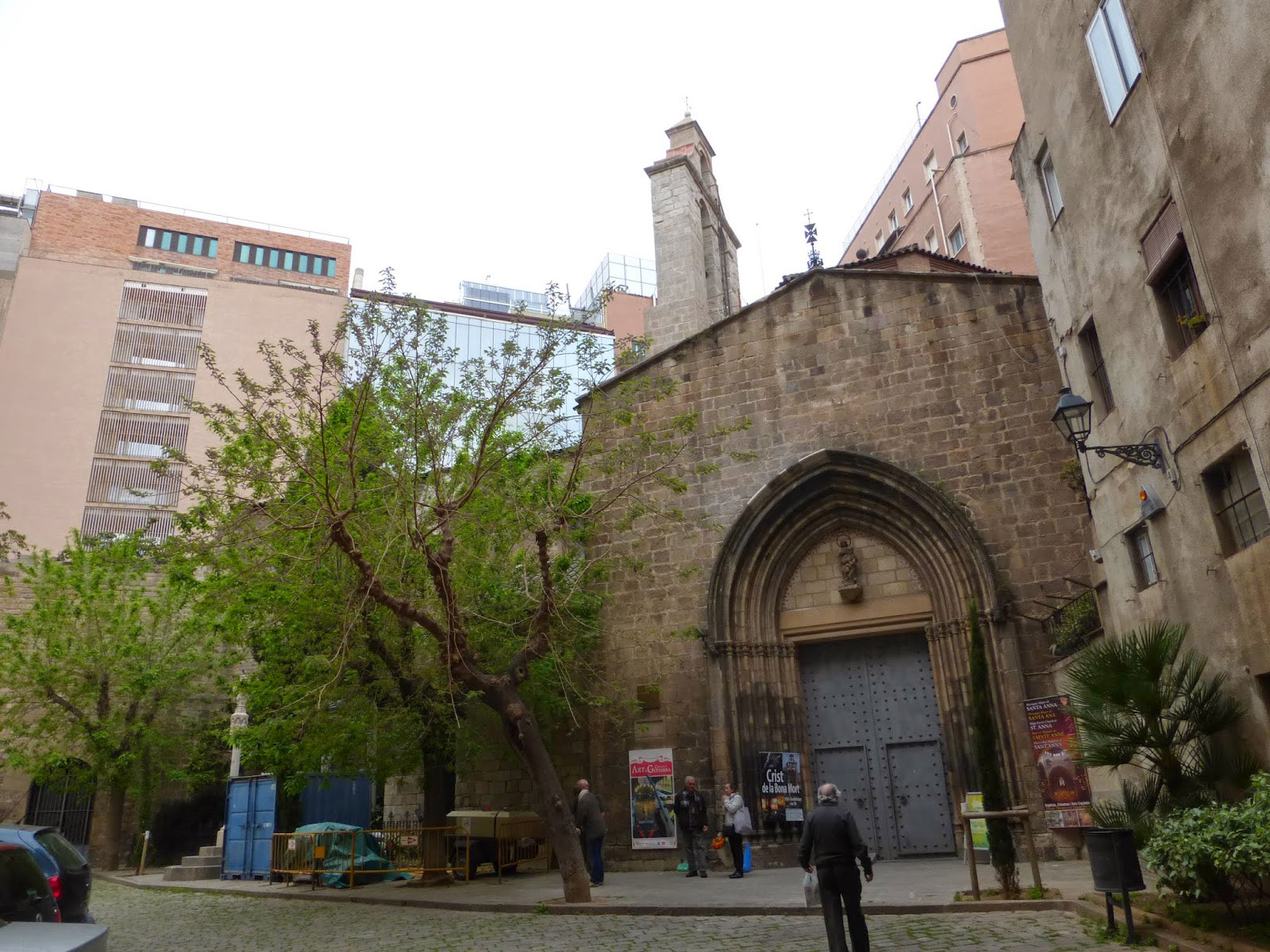
BRIEF HISTORY
The Holy Sepulcher Order settled in Barcelona in a church near to the Cathedral. Then in 1177, they built a new church placed where the present one is, the architect was Ramón Amadeu.
The church has had different names due to the changes of it denomination (collegiate church or parish) and also because of the changes in the Orders.
The church was reformed in 1835. Some years after, in 1873 the church was profaned by anti-religious groups as many other churches in Barcelona at that time. Because of this, it was closed to the public during some time.
In 1875 the surrounding areas where urbanized, in consequence, some of the constructions belonging the church where destroyed. But in 1881 it was named as a National Monument to avoid it demolition.
The dimensions of the church were not enough to admit all the public, so in 1887 they started the construction of a new and independent building. It was inaugurated in 1914 but it was not still finished.
The priest Ramón Balcells (1920-1936) was very active and he did some restorations in the church till he was murdered in 1936 during the Spanish Civil War. He renewed some altars, and in the main one and in the exterior facades he put adobe where there had been other constructions annexed.
In 1936 the church was fired, both the old one and the new one (Neo-gothic part). Due to this event, the dome was destroyed and it is possible to observe the new cimborio made with bricks. The old church conserved the exterior walls despite the fire, but the new one was demolished in 1938.










ARCHITECTURAL FEATURES AND GEOMETRY
The church of Saint Anna is an example of Romanic architecture with a Gothic style easily to notice in the nave.
It conserves from its origins the structure with the square apse and the cross plan with a barrel vault from the XIII century. The main entrance has a Gothic style from the year 1300.
The cloister has a Gothic style. It has 10 pointed arches in each lateral. The upper part of the cloister was burned in 1936 so it had to be built again.








DAMAGE AND DIAGNOSIS
The damages noticed in the inspection do not affect the structure stability, but if they are not repaired they could reduce the durability of the materials.




















REFERENCES
[1] J. M. Azcárate Ristori, “Monumentos españoles,” in Catálogo de los declarados histórico-artísticos, J. M. Azcárate Ristori, Ed. Madrid: CSIC, 1954, pp. 74–75.
[2] J. Ainaud, J. Gudiol, and F. P. Verrie, Catálogo monumental de España: la ciudad de Barcelona (vol. 2), 1st ed. Madrid: CSIC, 1947.
[3] J. Aran i Suriol, Santa Anna de Barcelona. Monestir, Colegiata, Parroquia. Barcelona: Editorial Mediterrània, 2002.
[4] A. A. Pi y Arimón, Barcelona antigua y moderna ó descripción e historia de esta ciudad desde su fundación hasta nuestros días. Barcelona: Imprenta y librería politécnica de Tomás Gorchs, 1854.
[5] A. Campany, La Iglesia de Santa Ana de Barcelona (Vol XVII). Barcelona: Liberia Francisco Puig, 1929.
[6] C. Flores and E. Amann, “La arquitectura de Barcelona,” Hogar y Arquitectura, Madrid, 1964.
[7] “Blog Parroquia de Santa Ana.” [Online]. Available: http://www.parroquiasantaanna.org/. [Accessed: 08-Jan-2015].
[8] J. Emili Hernández-Cros, G. Mora, and X. Pouplana, Arquitectura de Barcelona. Barcelona: Demarcació de Barcelona del Col·legi de Catalunya, 1990.
[9] B. Baldiri, “Monasterios de Cataluña,” 2016. [Online]. Available: http://www.monestirs.cat/monst/bcn/cbn02anna.htm. [Accessed: 14-Nov-2016].
